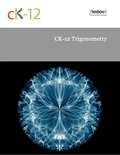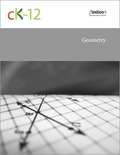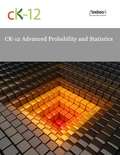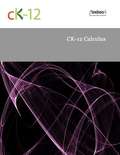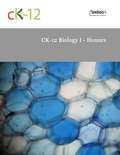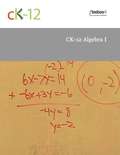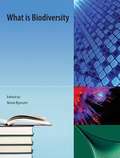- Table View
- List View
Motion Mountain: Pleasure, Technology and Stars)
by Christoph SchillerAn open source physics textbook.
Motion Mountain: Light, Charges and Brains, Twenty-third edition)
by Christoph SchillerAnswering questions on motion, the book gives an entertaining and mind-twisting introduction into modern physics--one that is surprising and challenging on every page. Starting from everyday life, the adventure provides an overview of the recent results in mechanics, thermodynamics, electrodynamics, relativity, quantum theory, quantum gravity and unification. It is written for undergraduate students and for anybody interested in physics.
Motion Mountain: The Adventure of Physics Vol. IV
by Christoph SchillerClimbing Motion Mountain up to this point, we completed three legs. We came across Galileo's mechanics (the description of motion for kids), then continued with Einstein's relativity (the description of motion for science-fiction enthusiast), and finally explored Maxwell's electrodynamics (the description of motion for business people).
Motion Mountain: The Adventure of Physics (Vol I. Fall, Flow and Heat)
by Christoph SchillerAn open source textbook
Motion Mountain: Relativity, Twenty-third edition)
by Christoph SchillerThis book is written for anybody who is curious about nature and motion. Curiosity about how people, animals, things, images and empty space move leads to many adventures.
CK-12 Trigonometry
by Ck-12 FoundationCK-12 Foundation's Trigonometry FlexBook covers the following chapters: Trigonometry and Right Angles - introduction to the trigonometric functions. Circular Functions - introduction to radian measure, circular functions and periodic functions. Trigonometric Identities - confirm, verify and derive various trigonometric identities. Inverse Functions and Trigonometric Equations - inverse functions to trigonometric functions, and will apply the domain, range and quadrants of the six inverse trigonometric functions to evaluate expressions. Triangles and Vectors - introduction to vectors and vector applications. Polar Equations and Complex Numbers - plot points in a polar coordinate system, graph and recognize limaçons and cardiods, and work with real-world applications involving polar coordinates and polar equations.
CK-12 Geometry
by Ck-12 FoundationCK-12 Foundation's Geometry FlexBook covers the following chapters: Basics of Geometry - undefined terms, defined terms, basic postulates of points, lines and planes; distances on a coordinate grid; complementary and supplementary angles; vertical angles; linear pairs and classification of polygons. Reasoning and Proof - inductive reasoning, deductive reasoning, conditional statements, properties of equality and two-column proofs. Parallel and Perpendicular Lines - the parallel line postulate, the perpendicular line postulate, and angles formed by two parallel lines and a non-perpendicular transversal. Congruent Triangles - the Triangle Sum theorem, triangle congruence, the SSS and ASA postulates, the AAS congruence theorem, two-column and flow proofs, the HL congruence theorem, AAA and SSA relationships, isosceles and equilateral triangles. Relationships Within Triangles - the midsegment theorem, the perpendicular bisector theorem, the angle bisector theorem, the concurrency of medians theorem, Napoleon's theorem, and the triangle inequality theorems. Quadrilaterals - interior angles of convex quadrilaterals, classifying quadrilaterals, properties of parallelograms, properties of rhombi, rectangles and squares, and properties of trapezoids. Similarity - ratio and proportion, properties of similar polygons, AAA and AA rules for similar triangles, using SSS and SAS to solve problems about similar triangles, identifying proportional segments in triangles and similarity transformations. Right Triangle Trigonometry - using the Pythagorean theorem when working with right triangles, classification of triangles, the converse of the Pythagorean theorem, using the geometric mean, properties of special right triangles, and trigonometric ratios. Circles - relationships between congruent and similar circles, the equation of a circle, tangent lines, arc measures, chords, inscribed angles, and angles formed by chords, secants and tangents. Perimeter and Area - finding the area of polygons, using scale drawings or models, finding the circumference of a circle, areas of circles and sectors, calculating the areas and perimeters of regular polygons and geometric probability. Transformations - transformations of figures in two-dimensional space including translations, reflections, rotations and dilations.
CK-12 Advanced Probability and Statistics
by Ck-12 FoundationCK-12 Foundation's Advanced Probability and Statistics FlexBook covers the following chapters: An Introduction to Analyzing Statistical Data - Students learn definitions of statistical terminology, and review data, measures of center, and measures of spread. Visualizations of Data - histograms and frequency distributions, common graphs and data plots, and box-and-whisker plots. An Introduction to Probability - events, sample spaces, probability, compound events, the complement of an event, conditional probability, and basic counting rules. Discrete Probability Distribution - random variables, probability distribution for a discrete random variable, mean and standard deviation of discrete random variables and the Binomial Probability Distribution. Normal Distribution - standard normal probability distribution, the density curve of the normal distribution, and applications of the normal distribution. Planning and Conducting an Experiment or Study - surveys, sampling and experimental design. Sampling Distributions and Estimations - sampling distributions and the Central Limit Theorem. Hypothesis Testing - The P-value, testing a proportion hypothesis, testing a mean hypothesis, and testing a hypothesis for dependent and independent samples. Regression and Correlation - scatterplots and linear correlation, Least-Squares regression, inferences about regression, and an introduction to multiple regression. Chi-Square- the Goodness-of-Fit test, test of independence, and testing one variance. Analysis of Variance and the F-Distribution - the F-Distribution and testing two variances, the One-Way ANOVA test, and the Two-Way ANOVA test. Non Parametric Statistics - nonparametric statistics, the rank sum test and rank Correlation, and the Kruskal-Wallis test.
CK-12 Calculus
by Ck-12 FoundationCK-12 Foundation's Single Variable Calculus FlexBook covers the following chapters: Functions, Limits, and Continuity - A review of the basics of functions is given. Students use linear approximations to study the limit process, before a more formal treatment of limits is given. Differentiation - Students explore instantaneous rate of change, and the relationship between continuity and differentiability. The Chain Rule and implicit differentiation are reviewed. Applications of Derivatives - Students gain practice with using the derivatives in related rates problems. Additional topics include The First Derivative Test, The Second Derivative Test, limits at infinity, optimization, and approximation errors. Integration - This chapter includes indefinite integrals calculus, initial value problems, definite integrals, the Fundamental Theorem of Calculus, integration by substitution, and numerical integration. Applications of Integration - This chapter includes applications of the definite integral, such as calculating areas between two curves, volumes, length of curves, and other real-world applications in physics and statistics. Transcendental Functions - This chapter includes differentiation and integration of logarithmic and exponential functions, exponential growth and decay, derivatives and integrals involving inverse trigonometric functions, and L'Hospital's Rule. Integration Techniques - Students explore integration by substitution, integration by parts, integration by partial fractions, trigonometric integrals, trigonometric substitutions, and improper integrals. Infinite Series - This chapter introduces the study of sequences and infinite series. The properties presented describe the behavior of a sequence or series, including whether a sequence approaches a number or an infinite series adds to a number.
CK-12 Biology I - Honors
by Ck-12 FoundationCK-12 Foundation's Biology 1- Honors FlexBook Covers the following chapters:<P><P> Foundations of Life Science- scientific investigations, methods, observations, & communication.<P> Chemical Basis of Life- matter, the significance of carbon, lipids, proteins.<P> Cell Structure and Function- prokaryotic, eukaryotic, plant, & animal cell features; structures / functions of DNA, RNA, protein, cell transport, homeostasis.<P> Photosynthesis- water, carbon, and nitrogen cycle between abiotic and biotic resources.<P> Cellular Respiration- relation to glycolysis, Krebs Cycle, electron transport chain.<P> Cell Division and Reproduction- cell division, reproduction.<P> Mendelian Genetics- inheritance, sex-linked traits.<P> Molecular Genetics- DNA, RNA, protein synthesis, mutation, regulating gene expression.<P> Human Genetics- human genome, diseases, Biotechnology- DNA technology, gene cloning.<P> History of Life- evolution, macroevolution, extinctions, episodic speciation, response to change.<P> Evolutionary Theory- Darwin's Theory of Evolution, common ancestry and natural selection.<P> Evolution in Populations- genetics of populations, genetic diseases, natural selection.<P> Classification- Taxonomy, scientific classification of organisms.<P> Principles of Ecology- Ecology's relation with energy; ecosystems, the water, carbon, and nitrogen cycles.<P> Biomes, Ecosystems and Communities- terrestrial/ aquatic biomes, community interactions.<P> Populations- Analysis of populations and dynamics.<P> Ecology and Human Actions- Balance between humans and the earth addressing natural resources, ecosystems, & biodiversity.<P> The Human Body- systems.<P> Nervous and Endocrine Systems- structures & functions, homeostasis.<P> Skeletal, Muscular, and Integumentary Systems- structures, functions, & homeostasis.<P> Circulatory and Respiratory Systems- structures and functions.<P> Digestive and Excretory Systems- structures/ functions, food pyramid.<P> Immune System and Disease- Body defenses against pathogens.<P> Reproductive System and Human Development- human reproductive systems, reproductive lifecycle, STDs.
CK-12 Algebra I
by Ck-12 FoundationCK-12 Foundation's Algebra FlexBook is an introduction to algebraic concepts for the high school student. Topics include: Equations & Functions, Real Numbers, Equations of Lines, Solving Systems of Equations & Quadratic Equations.
CK-12 21st Century Physics Flexbook: A Compilation of Contemporary and Emerging Technologies
by Ck-12 FoundationPhysics textbook
What is Biodiversity
by Melina Laverty Eleanor Sterling Ian Harrison James Gibbs Robert AhlfingerThis collection provides an overview of what is meant by the term 'biodiversity,' and how we measure it. The collection reviews the different levels of biodiversity, or the 'biodiversity hierarchy' including: genetic and phenotypic diversity; population diversity; species diversity; community diversity; ecosystem diversity; landscape diversity; and historical and ecological biogeographic diversity. Brief definitions of populations, species, communities, and ecosystems are provided, with some introductory discussion of different types of 'species concepts.' The collection defines the terms 'species richness' and 'species evenness' as methods for measuring species diversity, and it discusses the use of species richness as a surrogate for describing overall global biodiversity. The collection reviews the distribution of biodiversity in space, explaining the definitions of alpha, beta and gamma diversity for measuring diversity within and between ecosystems. The environmental factors that affect these patterns of spatial diversity are briefly discussed. The collection also includes a brief review of the different ways by which assessments of spatial diversity are used for conservation planning and management (e.g., based on ecoregions, or biodiversity hotspots and coldspots). The collection concludes with a brief discussion of diversity over geological time.

